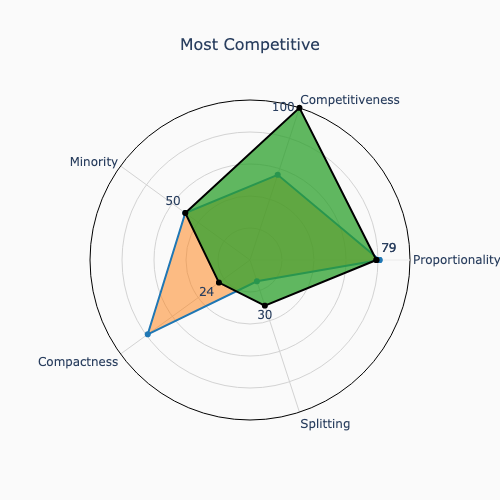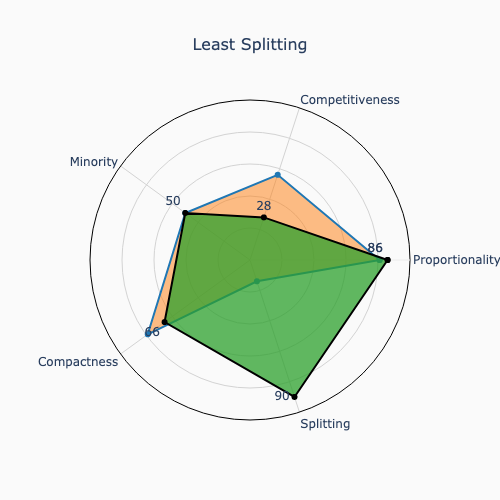Redistricting Trade-offs Illuminated
Note: This site has been superceded by Trade-offs in Redistricting.
Redistricting involves trade-offs between various policy objectives. The trade-offs that a state made in drawing their official 2022 congressional map are revealed by comparing it to the natural starting point for redistricting in that state. The range of alternatives that the mapmakers had are similarly highlighted using maps that optimize for proportionality, competitiveness, minority representation, compactness, and county-district splitting.

|

|

|

|

|

|
Figure 1: The official and five notable maps for North Carolina compared to the root map
That natural starting point for redistricting is a map where people who live near each other tend to be in the same district. For simplicity, we call this the root map or root plan.
You can see an example of this analysis on the Example page, and you can pick a state to look at on the States page.
A detailed description of and the rationale for our method is on the How It Works page. Key terms are bolded and defined on the Glossary page.